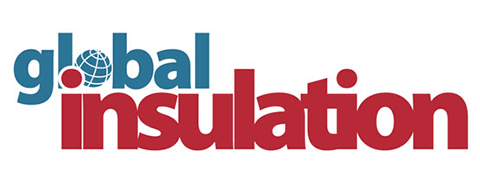Insulation industry news from Global Insulation
China: A study by researchers from Australia's Commonwealth Scientific and Industrial Research Organisation and Britain's University of Bristol says that the provinces of Shandong and Hebei are the source of a rise in trichlorofluoromethane (CFC-11) emissions. It attributed about 40% to 60%of in the rise in CFC-11 since 2013 to this region, according to Reuters. After studying atmospheric data from South Korea and Japan they estimated that CFC-11 emissions from eastern China during the 2014 - 2017 period were around 7000t/hr higher than 2008 - 2012.
Previously in mid-2018 an investigation by the Environmental Investigation Agency (EIA) speculated that the widespread use of CFC-11 by Chinese rigid polyurethane (PU) foam producers might be the source of the reported rise of emissions.
China launched an inspection campaign into 3000 foam manufacturers in 2018 and promised to punish any violations of the Montreal Protocol treaty. The Ministry of Ecology and Environment said in March 2019 that it had shut down two manufacturing areas that produced CFC-11. It added that its investigation into PU foam makers had not found any large-scale usage so far but that producers may be getting better at hiding their operations. It also noted that there was ‘uncertainty’ in published research and called for better detection mechanisms.
China: An investigation by non-government agency the Environmental Investigation Agency (EIA) has found that trichlorofluoromethane (CFC-11) is being widely used as a blowing agent in the rigid polyurethane (PU) foam insulation sector. The EIA contacted 25 precursor or foam producers and found that 18 of these plants were using CFC-11 in 10 different provinces.
In May 2018 the journal Nature revealed that CFC-11 emissions had increased by around 25% since 2012 despite reported production being close to zero in 2006. CFC-11, other chlorofluorocarbons (CFCs) and substances that damage the Ozone Layer were banned under the Montreal Protocol from 2010.
The EIA speculates that widespread use of CFC-11 by Chinese PU foam producers may be the source of the reported rise of emissions. It estimates that up to 3500 small and medium sized companies could have switched to using CFC-11 following a reduction in the supply of HCFC-141b, an alternative blowing agent, and lax enforcement of the ban on CFC-11. One company representative the EIA spoke to said that HCFC-141b was US$150/t more expensive than CFC-11.
“This is an environmental crime on a massive scale. How the Montreal Protocol addresses this issue will determine whether it continues to merit its reputation as the world’s most effective environmental treaty,” said Climate Campaign Leader Clare Perry.
The EIA has released its report ahead of the Open-Ended Working Group of the Montreal Protocol meeting in Vienna in mid July 2018.




